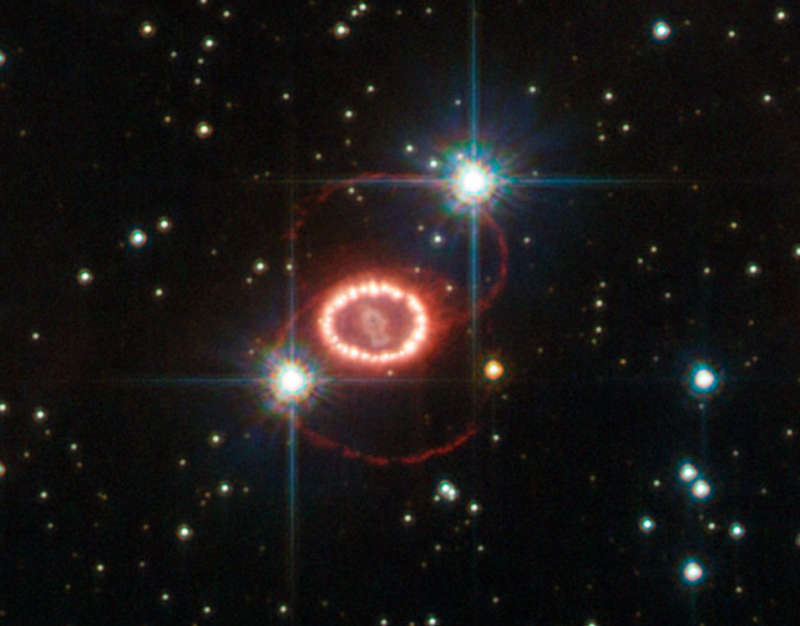
|
Credit & Copyright: ESA/Hubble,
NASA
Explanation:
What's causing those odd rings in
supernova 1987A?
Twenty
five years ago, in 1987, the brightest supernova
in recent history was seen in the
Large Magellanic Clouds.
At the center of the
above picture is an object central to the
remains of the violent stellar explosion.
Surrounding the center are
curious outer rings appearing as a flattened figure 8.
Although large telescopes including the
Hubble Space Telescope monitor the curious rings every few years, their origin
remains a mystery.
Pictured above is a Hubble image of the SN1987A remnant taken last year.
Speculation into the cause of the rings
includes beamed
jets emanating from an otherwise hidden
neutron star left over from the supernova, and the interaction
of the
wind from the progenitor
star with gas released before the explosion.
|
January February March April May June July August September October November December |
| ||||||||||||||||||||||||||||||||||||||||||||||||
NASA Web Site Statements, Warnings, and Disclaimers
NASA Official: Jay Norris. Specific rights apply.
A service of: LHEA at NASA / GSFC
& Michigan Tech. U.
Based on Astronomy Picture
Of the Day
Publications with keywords: supernova - rings - supernova remnant
Publications with words: supernova - rings - supernova remnant
See also:
- APOD: 2025 October 1 Á NGC 6960: The Witchs Broom Nebula
- APOD: 2025 July 31 Á Supernova 2025rbs in NGC 7331
- APOD: 2025 June 9 Á Between Scylla and Charybdis: A Double Cosmic Discovery
- Supernova Remnant Cassiopeia A
- APOD: 2025 January 8 Á Supernova Remnants Big and Small
- APOD: 2024 September 18 Á The Mermaid Nebula Supernova Remnant
- APOD: 2024 April 16 Á Filaments of the Vela Supernova Remnant
